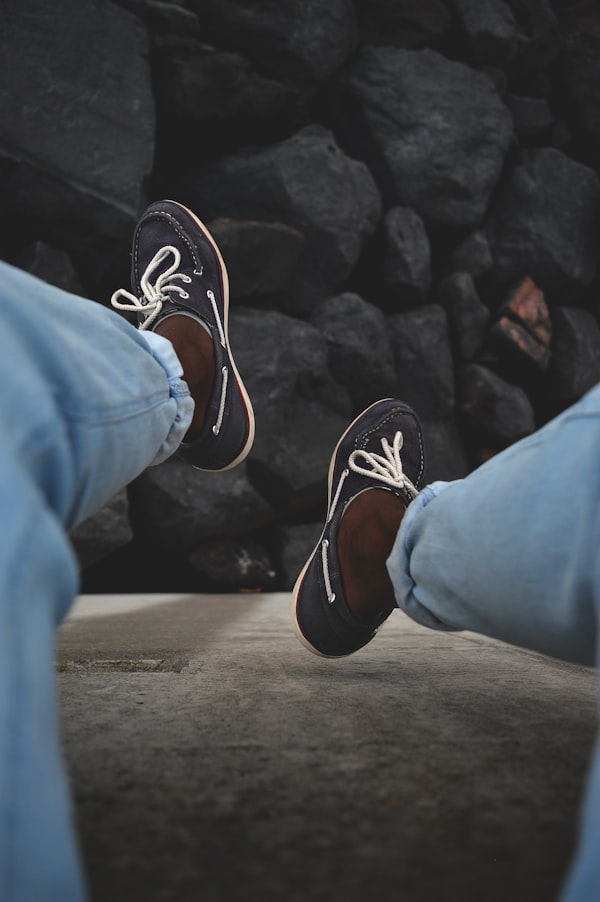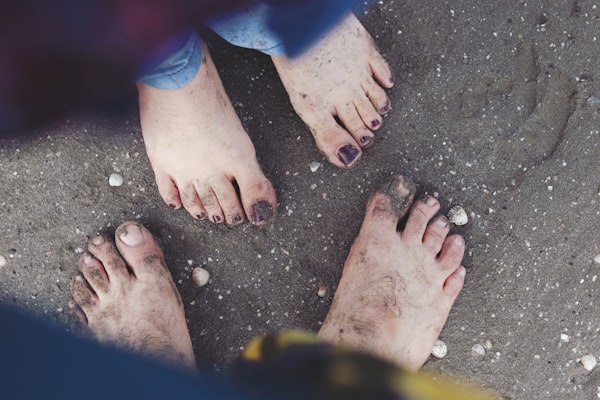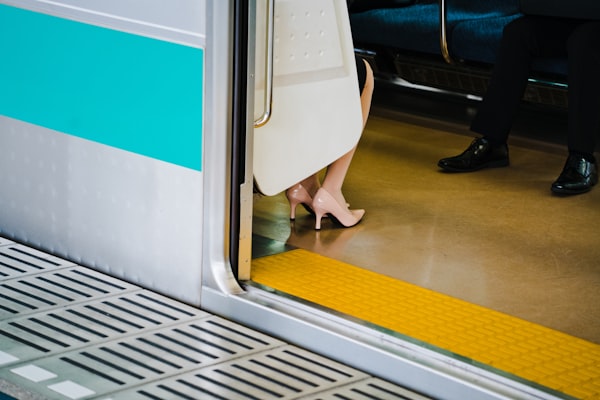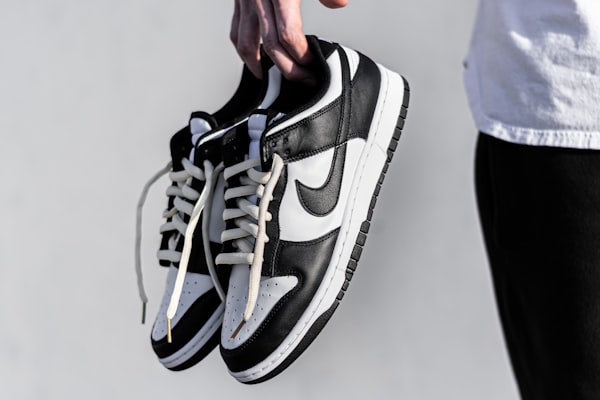Are you a Pilates enthusiast who's always wondered whether to wear shoes or go barefoot during workouts? Well, prepare to put your best foot forward because we're about to tackle this age-old question head-on!
In the world of Pilates, the footwear debate has been raging for years. Some swear by going barefoot, citing greater flexibility and control, while others prefer the support and grip of shoes. But which is better? As it turns out, the answer isn't so black and white.
Today we dive deep into the pros and cons of wearing shoes in Pilates, from the impact on your balance and alignment to the potential strain on your joints. We'll also explore the benefits of going barefoot, including improved proprioception and a deeper mind-body connection. By the end, you'll be armed with all the information you need to make a well-informed decision about your Pilates footwear.
So, whether you're a seasoned Pilates pro or a curious newcomer, get ready to take the first step toward your "sole" decision. Read on to discover the ins and outs of wearing shoes in Pilates – and decide whether to kick them off or keep them on!
The Pros and Cons of Wearing Shoes in Pilates
Wearing shoes or going barefoot during Pilates is a matter of personal preference. Some people find it easier to perform Pilates exercises while wearing shoes, while others prefer to do so barefoot. Let's examine the advantages and disadvantages of wearing shoes in Pilates.
1. Better Grip and Support
Wearing shoes can provide better grip and support during Pilates exercises, especially on equipment such as the reformer. Pilates shoes have non-slip soles that help you maintain balance and stability during movements. Moreover, shoes can support your feet and ankles, which can be especially beneficial if you have weak joints.
2. Protection from Injuries
Wearing shoes can also protect your feet from injuries, such as cuts or bruises. During Pilates exercises, your feet can come into contact with the floor or equipment, which can be uncomfortable or painful without shoes. Furthermore, shoes can provide cushioning and shock absorption, reducing the risk of impact injuries.
3. Hinders Foot Flexibility
Wearing shoes can hinder the flexibility of your feet and toes, which is essential for many Pilates exercises. Your feet need to be able to move freely to perform movements such as pointing and flexing. Shoes can restrict this movement, making it harder to execute exercises correctly and potentially leading to compensation by other parts of your body.
4. Impairs Mind-Body Connection
Finally, wearing shoes can impair your mind-body connection during Pilates exercises. Being barefoot allows you to feel the texture and temperature of the floor, which can help you to ground yourself and better connect with your body. Shoes, on the other hand, can create a barrier between you and the environment, making it harder to focus on the sensations of your body.
Wearing shoes or going barefoot during Pilates is a personal choice; both options have advantages and disadvantages. While shoes can provide better grip and support and protect your feet from injuries, they can also hinder foot flexibility and impair your mind-body connection. Ultimately, choosing between shoes and bare feet in Pilates depends on your preference and goals. Listening to your body and choosing what feels right for you is essential.
The Benefits of Going Barefoot in Pilates
Many Pilates enthusiasts go barefoot during their workouts, as it can offer several benefits. Let's explore the advantages of going barefoot in Pilates.
1. Greater Flexibility and Range of Motion
Going barefoot in Pilates can increase foot flexibility, allowing for a greater range of motion in your movements. In addition, bare feet can improve your balance and help you achieve a deeper stretch, enhancing your overall flexibility.
2. Improved Balance and Alignment
Going barefoot in Pilates can also improve your balance and alignment. Without shoes, you can feel the ground more effectively, which can help you adjust your body's alignment and balance accordingly. The soles of your feet have many nerve endings that can help you to connect with your body better and improve your overall posture.
3. Increased Proprioception and Mind-Body Connection
Going barefoot in Pilates can increase your proprioception, which is the sense of where your body is in space. Being barefoot can improve your ability to feel the ground beneath your feet and sense the position of your body in relation to it. This increased proprioception can enhance your mind-body connection and help you to move with more fluidity and grace.
Going barefoot in Pilates offers many benefits. Without shoes, you can connect more effectively with the ground and better sense the position of your body, leading to improved posture and overall Pilates performance. While going barefoot isn't for everyone, it's worth considering if you want to deepen your Pilates practice and connect more deeply with your body.
Which One Is Better: Shoes or Barefoot?
So, which one is better: wearing shoes or going barefoot during Pilates? The answer is not black or white, as each option has pros and cons. The answer really depends on individual preferences and goals. Each individual has different needs and goals, which may influence their footwear choice. Factors such as the type of Pilates exercises, the individual's level of experience, and any existing medical conditions should be considered when deciding between shoes and bare feet.
Additionally, some people may prefer to wear shoes for greater support and stability. In contrast, others may prefer to go barefoot for increased flexibility and mind-body connection. Understanding your personal goals and preferences is essential in choosing the footwear option that best aligns with them.
Regardless of your preference, listening to your body when deciding between shoes and bare feet in Pilates is essential. Your body may have its own preferences and limitations that should be considered. For example, wearing shoes may be necessary for support and protection if you have weak or injured feet. Conversely, going barefoot may be a more suitable choice if you have good foot health and flexibility.
Top Picks: Shoes to Consider for Pilates
If you've decided that wearing shoes in Pilates is the right choice, choosing the right pair is essential. When choosing Pilates shoes, look for ones that offer excellent grip and support but don't hinder foot flexibility. Here are our top picks for shoes to consider for Pilates:
1. Nike Free TR 8: This lightweight shoe offers excellent grip and flexibility, making it ideal for Pilates workouts.
2. Adidas Ultraboost 21: This shoe features a non-slip outsole and provides ample support to the feet and ankles, making it an excellent choice for those who need extra stability.
3. Reebok CrossFit Nano 8: This shoe is designed with flexibility and stability in mind, making it an excellent choice for Pilates workouts.
4. New Balance Minimus 20v7: This shoe is designed to be lightweight and flexible, providing excellent support while allowing for natural foot movement.
5. ASICS Gel-Kayano 28: This shoe offers a comfortable fit and excellent stability, making it a great choice for those who need extra support during Pilates workouts.
6. Vibram FiveFingers V-Train 2.0: These unique shoes mimic being barefoot while providing excellent grip and protection to the feet. This makes them perfect for those who prefer to go barefoot during Pilates workouts.
7. Puma Fierce Core: This shoe is designed with a non-slip sole and provides ample support to the feet and ankles. This makes it an excellent choice for those who need extra stability.
The shoes listed above offer excellent grip, support, and flexibility, making them great choices for Pilates enthusiasts. Ultimately, choosing between shoes and bare feet is up to you, and it's crucial to listen to your body and choose what feels right.
Trending: Who's Wearing Shoes in Pilates
Many Pilates enthusiasts choose to go barefoot, but some prefer to wear shoes during their workouts. Celebrities are no exception; many opt for shoes during their Pilates session. Here are some examples of celebrities who are wearing shoes in Pilates.
- Jennifer Aniston: The actress wears Nike Free TR Flyknit 3 during Pilates.
- Reese Witherspoon: The actress wears Adidas Ultraboost while doing Pilates.
- Kate Hudson: The actress wears Nike Air Zoom Pegasus during Pilates.
- Gisele Bundchen: The supermodel wears ASICS Gel-Kayano during Pilates.
- Sofia Vergara: The actress wears Reebok Nano 9 while doing Pilates.
- Ellie Goulding: The singer wears Nike Air Zoom Structure during Pilates.
- Vanessa Hudgens: The actress wears Adidas Pureboost while doing Pilates.
- Naomi Watts: The actress is often seen wearing Asics Gel-Kayano during Pilates.
Whether you go barefoot or wear shoes during your Pilates practice, listening to your body and choosing what feels right for you is most important. If you decide to wear shoes, take inspiration from these celebrities and select a shoe that provides excellent grip and support while allowing for natural foot movement.
On a Final Note
So, there you have it - the barefoot truth about wearing shoes in Pilates.
Whether you're a shoe fanatic or a barefoot believer, listening to your body and doing what feels best for you is the most important thing. After all, as Joseph Pilates himself said, 'Physical fitness is the first requisite of happiness.'
So put on your dancing shoes, or take them off - just keep flowing and find joy in the movement!
Related Articles












